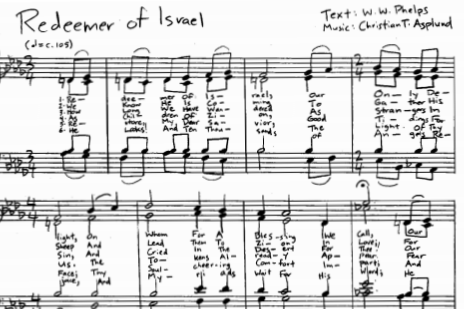Articles/Essays – Volume 48, No. 4
Guest Editor’s Introduction
Kristine Haglund gave me a gift. This issue is the long thank you note.
She had asked me from time to time to write something on music for Dialogue. Or take part in a panel discussion on music for the journal. Or do anything on music, since she loves the art and its place in our faith and I have been a kind of go-to guy on that for years.
And then the proverbial offer I couldn’t refuse: Would I guest edit an issue on music, the latest in a long—okay, short—line of music-issue Dialogues? Carte blanche, make it what I wanted, long or short? I could commission the articles, edit them as I saw fit, shape the whole the way a composer shapes a score.
So I said yes. I made the choice right off to avoid talking about hymn texts, which many folks want to do. I wanted to tune the content to the sound(s) of music itself as much as I could—how it works in our lives and our imaginations and our relationships and even our senses of humor. I asked smart musical people to write on whatever they wanted or to write about what I particularly wanted to hear from them. What you will read here are vivid responses from a new generation of go-tos on Mormon musical thought.
This all sounds heady in the worst way. Or maybe bland in the best way. Either way, so be it. I love what came of these invitations. In the lead article, Peter McMurray puts a loudspeaker onto the Book of Mormon in an unprecedented way. Time to restore that book to its sonic foundations. Then Emily Spencer explains that weird feeling some of us get when we’re singing, say, the tenor part of the sacrament hymn and the next tenor over is singing the melody. Why is that happening? She’ll catch you up on that. In an almost dervish-like investigation, Jeremy Grimshaw tours the cultural mash-up of Mormonism’s best-known/least-known musical protagonist, Lindsey Stirling. Jake Johnson goes on to survey Mormonism’s dicey relationship with musical theater, how we got into it and how we’ll never get out. (And shouldn’t.) Next, in five not-so-easy pieces, a roundtable ensues: five scholars tersely tell what they wish would change in Mormon musical practice. Finally, I pitch in with the real-but-sounds-fake tale of how I got Spencer W. Kimball’s record collection and what became of it.
In the midst of these essays come music-tinged poems gathered by Tyler Chadwick along with newly commissioned ones by Lara Candland. And, of course, we had to have some musical scores. So I asked Christian Asplund to share five of his settings of texts from Emma Smith’s founding hymnbook of Mormonism, musical treatments culled from his ongoing anthology, The Brick Church.
I said Kristine’s offer was a gift. Maybe it was a bet. She went all in and I called. This issue is what the dealer served up. I’d like to think we split the pot.
—Michael Hicks


 Back to full Issue
Back to full Issue

